Texas Heeler: Dog Breed Characteristics & Care
History, Care Tips, and Helpful Information for Pet OwnersKnown for their distinctive blue-tinged coats, the Texas heeler is an energetic and intelligent working breed. These dogs are a mix between an Australian shepherd and an Australian cattle dog and boast characteristics from both these "parent" breeds.
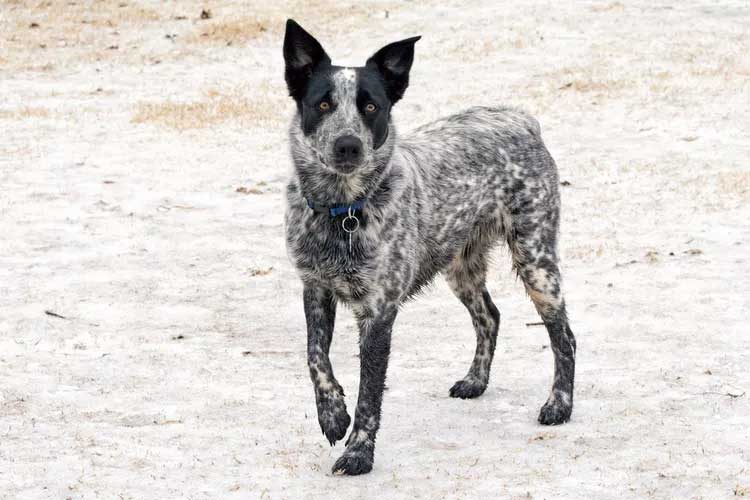
Named for the state where they’re most likely to be found, the breed earned its “heeler” nickname from the Australian cattle dog, because they are often referred to as the Queensland heeler or blue heeler. A great option for active owners, Texas heelers are highly intelligent and will be happiest when they have a job to do, which is why they excel in games and canine sports. They make for loyal and devoted family companions and will do well in families with children and similar-sized pets if socialized from a young age.
Breed Overview
GROUP: Working
HEIGHT: 17-22 inches
WEIGHT: 25-50 pounds
COAT: Short to medium-length coat, smooth and soft fur
COAT COLOR: Colors include black, blue merle, or blue ticked, with the possibility for white or tan trim on feet and legs
LIFE SPAN: 12-15 years
TEMPERAMENT: Intelligent, loyal, bold, active, playful, bright, fearless
HYPOALLERGENIC: No
ORIGIN: United States
Characteristics of the Texas Heeler
If you're looking for a dog that can keep pace with your active and full lifestyle, a Texas heeler may be a great choice. Bred from two highly intelligent and active "parent" breeds, the Texas heeler excels at being put to work or just hitting the great outdoors with their owner. If left unchecked, a Texas heeler's headstrong nature can make them difficult to train, so it's important to implement skills and command authority from the get-go with this breed. The more mentally stimulated and physically active a Texas heeler is, the more likely they are to consistently behave themselves.Affection Level High
Friendliness Medium
Kid-Friendly Medium
Pet-Friendly Medium
Exercise Needs High
Playfulness High
Energy Level High
Trainability High
Intelligence High
Tendency to Bark Medium
Amount of Shedding Medium
History of the Texas Heeler
The Texas heeler is a “designer dog” created by breeding two purebreds. In May of 1970, Lucy Guynes registered the Texas Heeler with the Animal Research Foundation and the breed’s popularity quickly grew as a working dog for farms and ranches in Texas.The story of this breed’s origins is somewhat unique when compared to many other designer breeds. To truly understand the Texas Heeler, you have to take a look at the characteristics of both the Australian cattle dog and the Australian shepherd dog. Because there isn’t a great deal of information on the exact origins of the Texas heeler, an exploration of the history of its parent breeds can help understand this lovable companion and working dog.
In the 1800s, Australian settlers on large ranches bred the Australian cattle dog as a hardy working dog that could help herd cattle; they needed a breed that could tolerate the often challenging climate in Australia, and dogs that had previously been imported from England weren’t able to withstand the challenging ranch life. Ranchers began breeding English dogs with the native Dingo of Australia, and most of these dogs ended up with a distinctive blue-colored coat, earning them the name blue heelers. In 1893, Robert Kaleski began breeding blue heelers, and the dog was accepted into the American Kennel Club in 1980.
Texas Heeler Care
Texas Heelers can be great family pets, but early (and frequent) training is necessary to ensure you channel their intelligence and energy properly. Because they are an active breed, they do best in a home that boasts plenty of land and access to activities such as hiking or dog parks. With the proper care and attention, they can be a loyal companion for years to come.Exercise
Texas heelers are bred from two very active herding breeds, so they'll require lots of daily exercise. As working dogs, they also prefer having a job to do and are highly task-oriented. They make excellent running and cycling companions but will also thrive with a variety of activities that condition them physically and stimulate them mentally, like hide-and-seek, fetch, or canine sports. They do have an innate drive to herd, so be sure to walk your dog on a leash and keep them close when out and about.
Grooming
Though Texas heelers only have short- to medium-length coats, they are thick and double-layered, so they tend to shed moderately most of the time. When they blow their undercoats in the spring shedding season (and sometimes even in the fall), the shedding can become heavier. You'll want to brush out your Texas heeler's coat at least once or twice weekly with either a bristle or pin brush to help keep their coats as healthy as possible and minimize excessive shedding.
Additionally, maintain a regular grooming routine when it comes to teeth brushing, ear cleaning, and nail trims. If you feel at all unable to complete these tasks every few weeks, you can look into groomers in your area to do it for you.
Training
Texas heelers are a highly intelligent breed, making them relatively easy to train. Though they are very affectionate with their families, they can be protective and suspicious of strangers. As a result, they are popular watchdogs (though they often won't bark unless a stranger is actually spotted). They can also be great with kids but may need to be disciplined not to nip and herd from time to time. If you have other pets in your home, its helpful to raise your dog from a young age alongside them—otherwise, they may be inclined to utilize their natural herding instinct on the other fur members of the household, especially if they are smaller in size.
Common Health Problems
Though they are generally healthy, Texas heelers can develop a few health issues that you should be aware of. If you notice symptoms of the below issues—or any health problems at all—make sure to contact your vet promptly. Some health issues common with Texas Heelers include:
Hip and/or elbow dysplasia
Distichiasis, a condition where eyelashes grow on the inside of the eyelid
Progressive retinal atrophy, a serious and incurable condition that can eventually cause blindness.
Diet and Nutrition
Texas heelers can be prone to easy weight gain, especially if they're not active enough, so ensure that your dog is receiving a biologically appropriate food containing both protein and healthy fats. You'll also want to look for formulas with ground bone and vegetables in them, as they contain vitamins and minerals that are essential for this breed's optimal health and performance.
Where to Adopt or Buy a Texas Heeler
The Texas heeler technically falls under the category of a "designer breed,” which means you’ll likely have to work with a breeder in order to take one of these dogs home. Just like any other mixed breed dog, they can sometimes end up in shelters as well as breed-specific rescues, such as the Texas Cattle Dog Rescue. Always do your best to seek out a reputable breeder before purchasing—they should be able to provide you with health and vaccination records for both parents and have a track record of healthy litters. In general, you can expect to pay anywhere from $500 to $1000 for a Texas heeler puppy from a breeder.Texas Heeler Overview
Pros
Great family pet
Easily trainable
Hard-working
Very intelligent
Cons
Require lots of daily exercise and mental stimulation
Can be wary of strangers
Can get destructive if left alone too long
Strong herding instincts
More Dog Breeds and Further Research
When determining if the Texas heeler is the right dog for your family, be sure to research all aspects of the breed and consult other Texas heeler dog owners, as well as breeders and rescue groups, to learn more.
FAQ
Are Texas heelers rare?
Texas heelers are not considered a rare dog breed. That being said, they are more likely to be available through a breeder than through adoption, though a small number of breed-specific rescues do exist.
Are Texas heelers good apartment dogs?
No—Texas heelers are very active dogs that need a lot of physical and mental stimulation. They do best in homes with ample backyard space for them to play in. If you do live in an apartment, take your Texas heeler for frequent walks and trips to the dog park to ensure they get enough exercise.
Are Texas heelers aggressive?
Texas heelers are not considered an innately aggressive dog breed. However, they can be skeptical of new people and may bark or keep their distance until they're comfortable. They also have a natural herding instinct, so they may try to corral small children or pets, even gentling nipping at them to "keep them in line."
Are Texas Heelers and blue heelers the same?
No, but they are related. Texas heelers are the result of crossing the Australian cattle dog, also known as the blue heeler, with the Australian shepherd.
Is the Texas Heeler a recognized breed?
No, the Texas heeler is not recognized by any major kennel clubs such as AKC, CKC, and UKC. However, the Texas heeler's parent breeds, the Australian cattle dog and Australian shepherd, are each recognized in the herding/pastoral groups.
Texas Heeler Dog Introduction
This paper introduces the Overview, Appearance, Temperament, Living Needs, Care, Health and History of Texas HeelerA medium-sized crossbreed in between the Australian guard and the Australian livestock pet dog, the Texas heeler is a whip-smart, lightning-fast herder with energy to spare.

Texas Heeler Overview
| OFFICIAL NAME | Texas Heeler and Texas Heeler Puppies |
| COMMON NAME | Texas Heeler and Texas Heeler Dog |
| PET HEIGHT | 17 to 22 inches |
| PET WEIGHT | 25 to 50 pounds |
| LIFESPAN | 12 to 15 years |
| GOOD WITH | families |
| TEMPERAMENT | friendly, outgoing, playful, willful |
| INTELLIGENCE | high |
| SHEDDING AMOUNT | seasonal |
| EXERCISE NEEDS | high |
| ENERGY LEVEL | active |
| VOCAL LEVEL | when necessary |
| DROOL AMOUNT | low |
| BREED GROUP | hybrid |
| BREED SIZE | medium (26-60 lbs.) |
| COAT LENGTH | short |
| COLORS | black, blue, brown / chocolate / liver, fawn, gray |
| PATTERNS | bicolor, flecked / ticked / speckled, merle, tricolor |
| OTHER TRAITS | cold weather tolerant, easy to groom, easy to train, good hiking companion, high potential for weight gain, hot weather tolerant, strong loyalty tendencies |
She doesn't just like working to do-- she requires one and will certainly be happiest in a home with an experienced owner who's prepared to prepare daily tasks to keep her hectic. Early, regular training along with day-to-day activities will allow her to funnel her power in ideal means so she fits snuggling with you after wearing herself out.
Texas Heeler Appearance
Compact and strong, the Texas heeler is a medium-sized, incredibly sports pet dog with a safety, weatherproof double layer. Her fur can be solid in color but is more frequently mixes of white, grey, black, blue, blue merle, and brownish. Not just is she gorgeous, but that layer does a wonderful job of managing her temperature level in both hot and cold climate.
With any type of relatively recent crossbreed, it's difficult to say precisely which traits will prevail from her parent type. In fact, if you obtain a team of Texas heelers with each other, it's totally possible that no 2 will share the exact same coat color.
Although Texas heeler puppies' ears are saggy at birth, within a few weeks they cheer up and stay straight and pointy after that out. Her large, bright eyes are typically brownish, and lots of Texas heelers are born with a normally bobbed tail.
Texas Heeler Puppies Temperament
The most important thing to comprehend regarding the Texas heeler temperament is that these clever, tenacious pets will certainly experiment to get what they want, states Kayla Fratt, CBDC, founder of Journey Dog Training. "If you're not all set to harness that perseverance and intelligence permanently, you can easily wind up bewildered with these types," she states.A Texas heeler may not be a terrific fit for a first-time canine owner. However, for the right kind of individual, those brains, plus the dogs' tendency to create strong bonds with their humans, can make them the most effective possible companion.
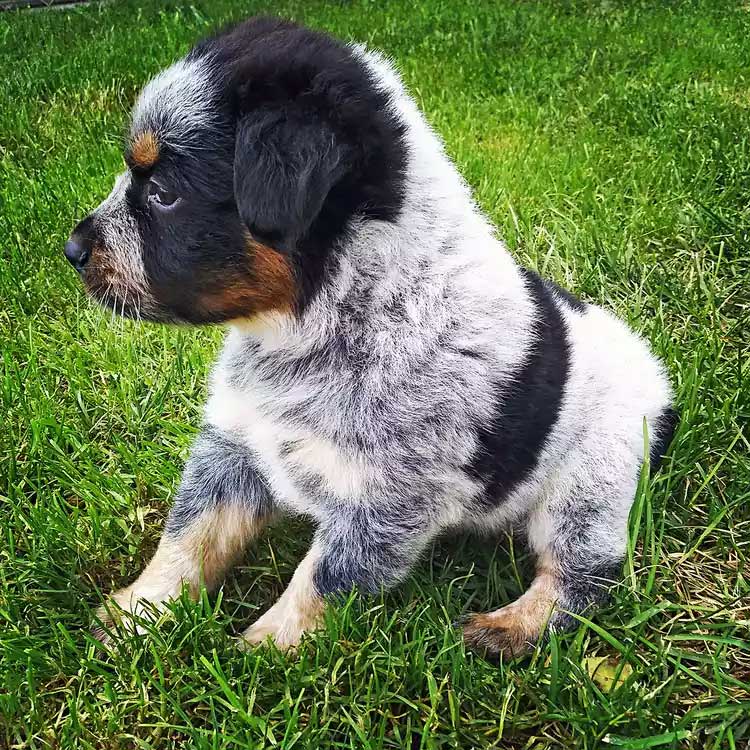
Fratt explains that Texas heelers are most matched for families that are highly energetic and open up to functioning closely with a smart pet. These dogs can be quite sensitive to modifications but are also identified when confronted with difficulties. Therefore, they flourish in environments that offer regular, mental excitement, and a lot of training. If entrusted to their own gadgets, these dogs may display strong-willed actions, yet in truth, they are merely utilizing their knowledge and determination to acquire their wishes. This type is highly trainable and has wonderful potential for obtaining new techniques and replying to various commands. Regular favorable support is essential to successfully training them, and staying up to date with their understanding rate may be one of the most difficult element.
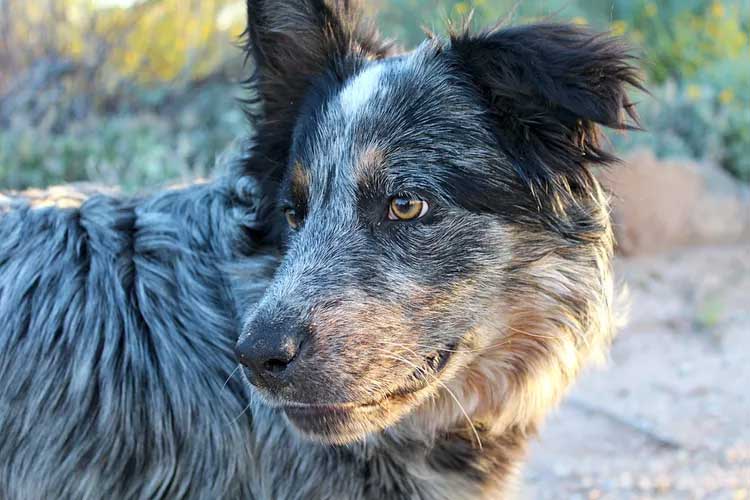
While Texas heelers love their people deeply, they can be wary of strangers and have a tendency to notify their family members to a person not familiar with a bark. However socializing your Texas heeler pup from an early age will certainly help her approve brand-new individuals, pets, and scenarios easily.
It is very important to understand that herdsmans are going to herd. As a result of this, Texas heelers could be difficult to have in a home with small children, whom the canines really feel an all-natural reaction to keep in line. This goes double for small animals, consisting of pet cats. Constantly make certain your kiddos know just how to appropriately interact with canines and never ever leave them unsupervised with any type. Early socializing, intro, and training will certainly help your puppy discover what not to herd, too.
Texas Heeler Dog Living Needs
With 2 moms and dad breeds that were bred for working long hours, it's no surprise that the Texas heeler is a canine who requires plenty of exterior workout on a daily basis. SHe's not a great candidate for city or apartment living and favors a larg, securely fenced yard (or even much better-- a ranch!) where she can extend her legs.However do not perplex that love of the outdoors whith a desire to be on her vyer own. "Herding dogs can be really delicate and psychological with their people, which makes connections really feel deep," Fratt states. "Plan on an activity of some type on a daily basis with your Texas heeler."
Fratt recommends running, treking, biking, dexterity, swimming, herding, dock diving, or perhaps competitive pet dancing with your Texas heeler.
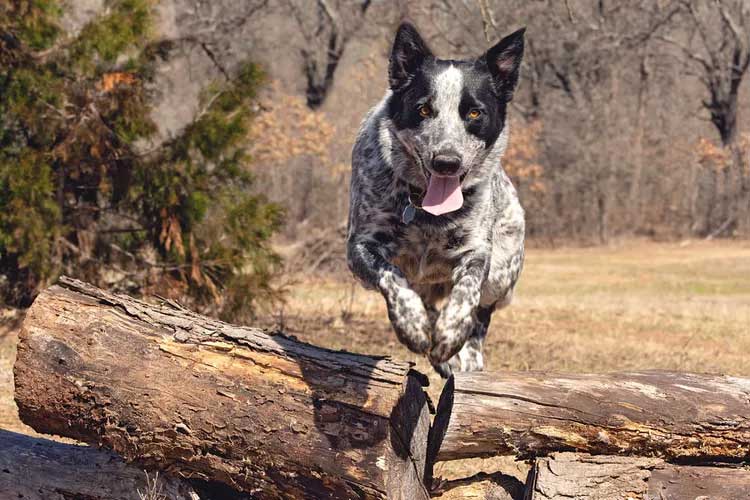
According to her, several herding pet dogs flourish when taken part in a diverse series of activities. These tasks can vary from high-intensity ones liek dexterity or playing bring, to even more endurance-based activities like treking and route operating.
That mix is essential, Fratt claims, because, "continuous high-adrenaline fetch or light/shadow chasing can rapidly cause an 'adrenaline junkie' kind pet dog who struggles to loosen up. Even if the pets appreciate bring doesn't indicate it's good for them to play continuously."
Texas heelers tyhat do not obtain the proper amount of workout will likely find various other, much less enjoyable means to burn off their energy-- such as exploring what, specifically, is inside those fluffy couch cushions.
Texas Heeler Puppies Care
To be 100-percent clear, the Texas heeler is not a low-maintenance canine when it pertains to her exercise requires; lazy-bones use Nonetheless brief qualifies as very easy to care for. She simply needs an excellent cleaning every couple of days and a bath each month approximately-- however, if she enters something odiferous throughout her outdoor adventures, bath nights can be much more frequent.The canine's water resistant dual layer of fur sheds to a moderate level, yet does not need to be skillfully groomed. Apart from that, cleaning the teeth, cutting the nails consistently, and examining her ears as soon as a week must aid maintain her good condition.
The Texas heeler is concentrated on staying active and bringing delight to her human companions, so it is critical to uncover common activities. Participating in favorable support training and taking part in different dog sporting activities such as dexterity, flyball, and dock diving deal great opportunities to strengthen the bond while maintaining her emotionally triggered.
Texas Heeler Dog Health
By giving ideal attention, consistent sees to the veterinarian, and a healthy diet regimen, the Texas heeler can live for approximately 12 to 15 years. Nevertheless, being a vibrant and energetic rounding up pet, Texas heelers might be prone to particular issues such as getting too hot, as noted by Michael Miller, DVM, who is a co-owner of Lakewood Animal Healthcare Facility in Morris, Ill."" Even the most athletic, in-shape canine companion can still suffer from extreme distress of hyperthermia on hot days," he claims. "Cattle canine blends, like various other energetic pets, can continue to run and play without providing obvious cautions that they are coming to be overheated."
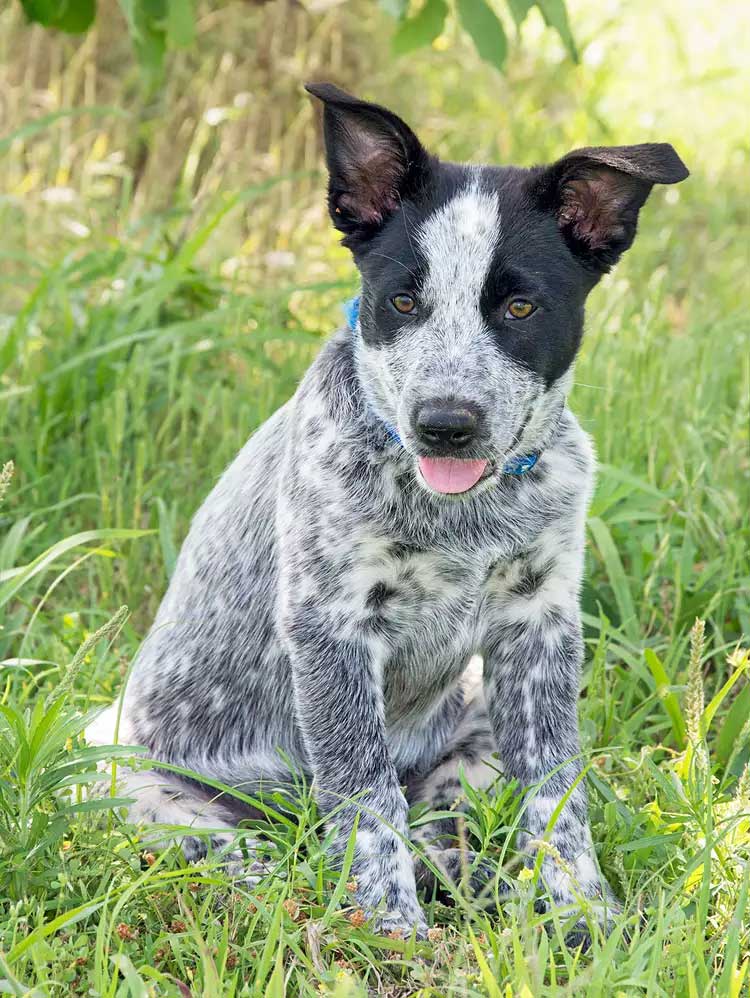
In addition, he points out the possible danger of getting harmed in their feet and legs as a result of tasks such as running, chasing, and examining. "Dog proprietors are particularly worried regarding cranial cruciate ligament tears, which are similar to ACL injuries in human athletes," Miller discusses. "If there are any type of injuries in the feet and legs, it is important to have a vet assess them to figure out if further therapy is required."
It is very important for Texas heeler owners to know the illness that are generally found in the parent types.
Elbow joint and hip dysplasia
Eye issues including cataracts, autoimmune thyroiditis, collie eye anomaly, distichiasis (eyelashes growing on the within the eyelid) and modern retinal atrophy
Heart problems
Epilepsy
Hereditary cancer, such as lymphoma
Genetic genetic hearing problems
Excessive weight
Texas Heeler Dog History
Like several hybrid types, such as the Texas heeler, there is minimal videotaped info concerning the breed's history. The casual mixing of Australian cattle pet dogs and Australian guards has actually probably been happening for a long period of time, however there is no particular dog breeder or kennel that can be attributed with officially developing this crossbreed.To guarantee the health of your Texas heeler young puppy, it's critical to do your due persistance when choosing a breeder. The surge in appeal of designer dogs has caused a rise in unethical breeders that prioritize profits over animal welfare. These dog breeders might keep their pet dogs in inhumane problems and neglect their health and well-being, so it's vital to look into the breeder completely to ensure they abide by moral and gentle breeding practices.
Look out for these indication to stay clear of coming down with a young puppy mill rip-off as you search for your new furry buddy:
There are numerous mixed breeds to buy from the exact same dog breeder.
The website provides wait times for pups.
The dog breeder provides to deliver young puppies.
It's hard to determine dog breeder get in touch with details (no phone number, get in touch with email, and so on).